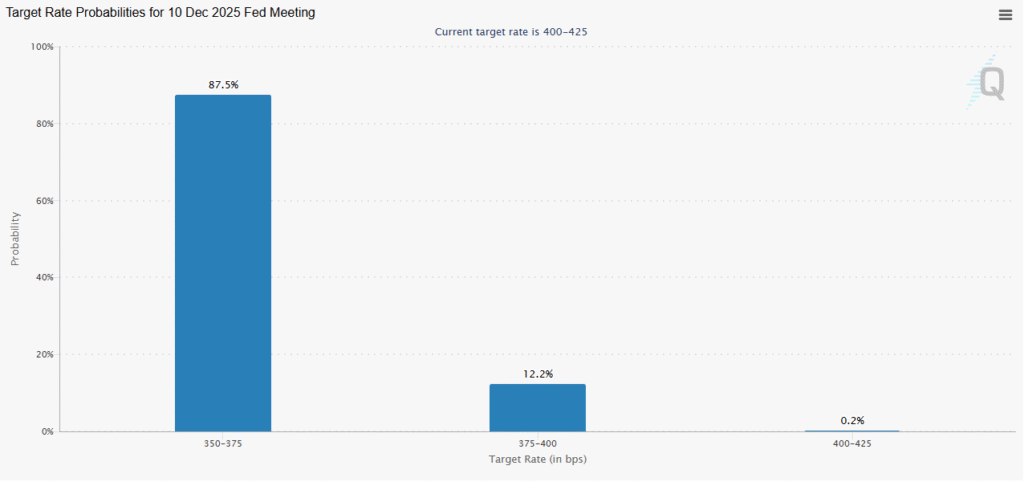Federal Reserve’s Recent Rate Cut: Implications for the Cryptocurrency Market
In an unexpected move that could reshape investment landscapes, the Federal Reserve has once again slashed interest rates. This decision, driven by a need to stimulate economic growth amidst various global economic pressures, has left investors speculating about the potential impact on various asset classes, including cryptocurrencies. Will this monetary policy adjustment lead cryptocurrencies like Bitcoin, Ethereum, and others to rally, or will it cause a stall in the momentum that these digital assets have been experiencing?
Background on Federal Reserve’s Decision
The Federal Reserve’s decision to cut interest rates comes in response to sluggish economic indicators and concerns over global trade tensions and their impacts on economic growth. Lower interest rates are traditionally seen as tools to encourage borrowing and investing by reducing the cost of finance. While they are primarily aimed at stimulating traditional economic sectors, their effects often spill over into alternative investment areas like cryptocurrencies.
Potential Impacts on Cryptocurrency Market
Influx of Investors:
Lower interest rates diminish the returns from traditional fixed-income investments such as bonds, making higher-risk assets like stocks and cryptocurrencies potentially more attractive. This dynamic could result in an influx of capital into the crypto markets, as investors seek higher returns that are not available in more traditional sectors. For cryptocurrencies, which are already appealing due to their high volatility and potential for substantial gains, reduced interest rates could serve as a catalyst for attracting more mainstream and institutional investors.
Inflationary Pressures:
An indirect impact of the rate cuts could be an increase in inflationary pressures. Historically, loose monetary policy tends to result in higher inflation over time. Cryptocurrencies, especially Bitcoin, are often touted as a hedge against inflation. This is largely due to their capped supply, which contrasts starkly with fiat currencies that can be printed at will by governments. As such, a wave of investors might turn to cryptocurrencies as a hedge against depreciating fiat currencies.
Economic Uncertainty:
The economic uncertainty that leads to a rate cut could also play a pivotal role in cryptocurrency investment. During times of economic distress or uncertainty, some investors might view digital assets as a Safe Haven or an uncorrelated asset class that can act as a diversification tool. Although the cryptocurrency markets can be profoundly volatile, some segments of the investor community perceive them as independent from traditional financial systems and thus a good hedge against market turmoil.
Potential Market Volatility:
While the potential influx of new investors and capital can drive prices up, the cryptocurrency market is known for its volatility, which could be intensified by rapid changes in investment flows. Quick inflows (and possibly outflows) of capital might lead to increased price volatility, which might not necessarily be beneficial for every investor, particularly those looking for stable returns.
Will Crypto Rally or Stall?
The answer to this question is not straightforward. On the one hand, lower interest rates should theoretically make riskier assets like cryptocurrencies more attractive due to the relative unattractiveness of bond yields. This might suggest a potential rally. On the other hand, the reasons behind the rate cut—particularly global economic uncertainties and potential inflation—might make some investors wary of investing in anything at all, possibly stalling momentum in the crypto markets.
Ultimately, the direction in which the cryptocurrency markets move will likely depend on broader economic conditions, investor sentiment, and how both of these are influenced by continued central bank policies. Investors would be wise to keep their eyes on global economic indicators and associated central bank responses, which will likely provide valuable clues about the future movements of the cryptocurrency market.
In conclusion, while federal rate cuts could signal a bullish scenario for cryptocurrencies by making them more attractive compared to traditional assets, the underlying economic uncertainties could also cause increased market volatility. As always, potential investors should approach the market with a clear strategy and an awareness of the increased risks associated with increased volatility.



